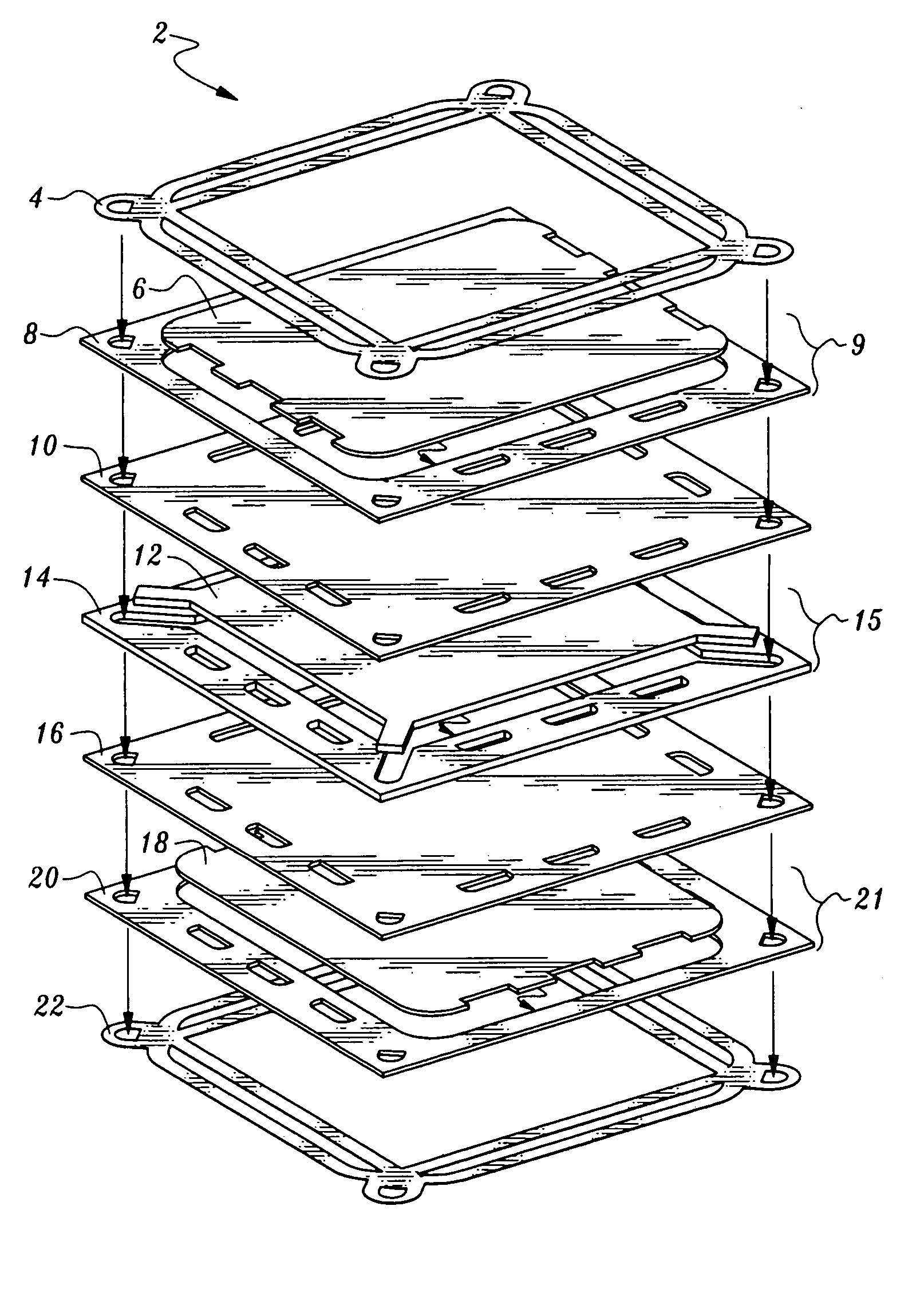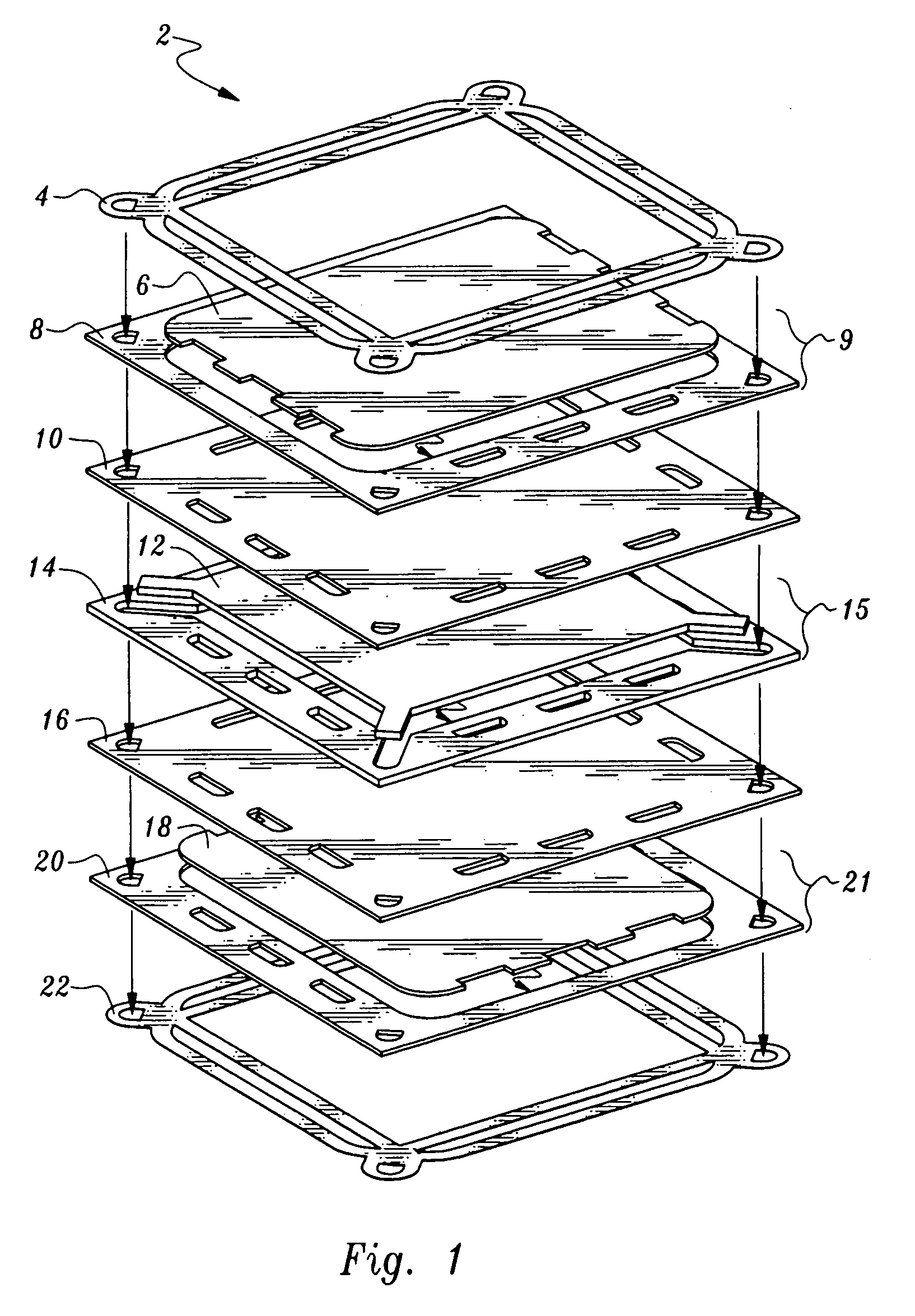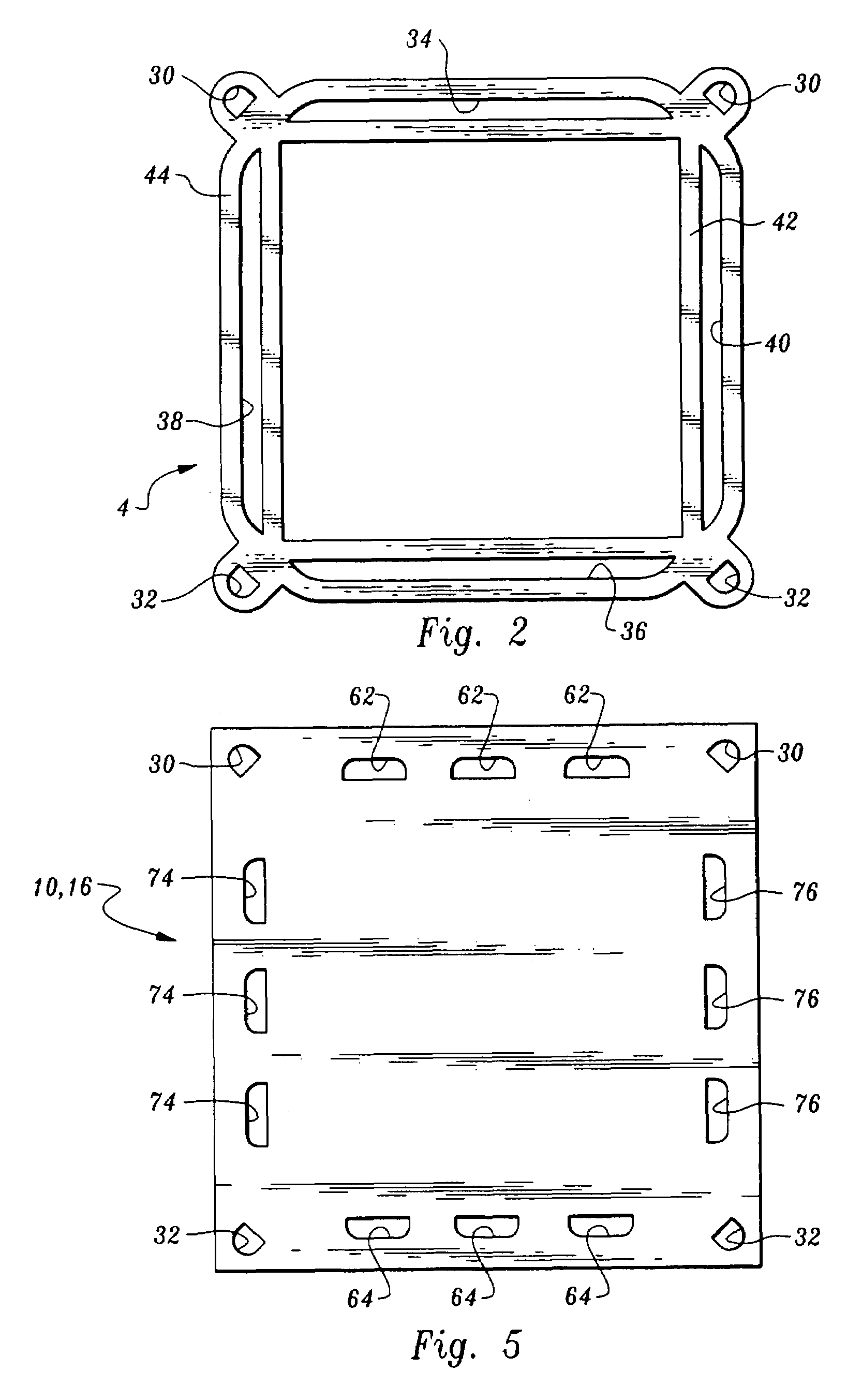Channel-less proton exchange membrane fuel cell
a proton exchange membrane and fuel cell technology, applied in the field of electrochemical energy converters, can solve the problems of inadequate fluid distribution, incomplete fluid diffusion, and existing pemfcs, and achieve the effects of improving mechanical loading, superior mechanical loading, and facilitating electrical current transmission
- Summary
- Abstract
- Description
- Claims
- Application Information
AI Technical Summary
Benefits of technology
Problems solved by technology
Method used
Image
Examples
Embodiment Construction
[0047]FIG. 1 shows an exploded isometric view of the preferred embodiment of bipolar separator 2. Bipolar separator 2 includes PTFE frame gasket 4, anode GDL 6, anode flow field gasket 8, blank gasket 10, coolant GDL 12, coolant flow field gasket 14, blank gasket 16, cathode GDL 18, cathode flow field gasket 20, and PTFE frame gasket 22. Anode GDL 6 and anode flow field gasket 8 together form anode separator 9; coolant GDL 12 and coolant flow field gasket 14 together form coolant separator 15; and cathode GDL 18 and cathode flow field gasket 20 together form cathode separator 21.
[0048]FIG. 2 is a detailed plan view of the obverse and reverse of PTFE frame gaskets 4 and 22. PTFE frame gaskets 4 and 22 include coolant ingress manifolds 30, coolant egress manifolds 32, PTFE oxidant ingress manifold 34, PTFEoxidant egress manifold 36, PTFE fuel ingress manifold 38, PTFE fuel egress manifold 40, inner sealing perimeter 42, and outer sealing perimeter 44. PTFE frame gaskets 4 and 22 funct...
PUM
 Login to View More
Login to View More Abstract
Description
Claims
Application Information
 Login to View More
Login to View More - R&D
- Intellectual Property
- Life Sciences
- Materials
- Tech Scout
- Unparalleled Data Quality
- Higher Quality Content
- 60% Fewer Hallucinations
Browse by: Latest US Patents, China's latest patents, Technical Efficacy Thesaurus, Application Domain, Technology Topic, Popular Technical Reports.
© 2025 PatSnap. All rights reserved.Legal|Privacy policy|Modern Slavery Act Transparency Statement|Sitemap|About US| Contact US: help@patsnap.com



